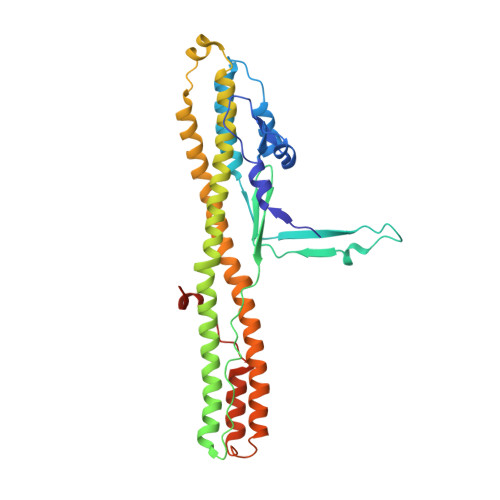A viral-fusion-peptide-like molecular switch drives membrane insertion of botulinum neurotoxin A1.
Lam, K.H., Guo, Z., Krez, N., Matsui, T., Perry, K., Weisemann, J., Rummel, A., Bowen, M.E., Jin, R.(2018) Nat Commun 9: 5367-5367
- PubMed: 30560862
- DOI: https://doi.org/10.1038/s41467-018-07789-4
- Primary Citation of Related Structures:
6DKK, 6MHJ - PubMed Abstract:
Botulinum neurotoxin (BoNT) delivers its protease domain across the vesicle membrane to enter the neuronal cytosol upon vesicle acidification. This process is mediated by its translocation domain (H N ), but the molecular mechanism underlying membrane insertion of H N remains poorly understood. Here, we report two crystal structures of BoNT/A1 H N that reveal a novel molecular switch (termed BoNT-switch) in H N , where buried α-helices transform into surface-exposed hydrophobic β-hairpins triggered by acidic pH. Locking the BoNT-switch by disulfide trapping inhibited the association of H N with anionic liposomes, blocked channel formation by H N , and reduced the neurotoxicity of BoNT/A1 by up to ~180-fold. Single particle counting studies showed that an acidic environment tends to promote BoNT/A1 self-association on liposomes, which is partly regulated by the BoNT-switch. These findings suggest that the BoNT-switch flips out upon exposure to the acidic endosomal pH, which enables membrane insertion of H N that subsequently leads to LC delivery.
- Department of Physiology and Biophysics, University of California, Irvine, 92697, CA, USA.
Organizational Affiliation:

















